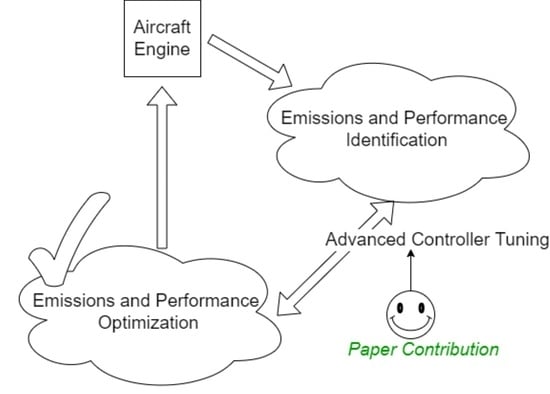Advanced Control Algorithm for FADEC Systems in the Next Generation of Turbofan Engines to Minimize Emission Levels
Abstract
:1. Introduction
- Reducing the engine response time;
- Minimizing the engine fuel consumption;
- Managing the engine constraints and physical limitations;
- Improving the pilot command tracking;
- A combination of the above objectives.
2. Performance Model of the Engine
3. Comprehensive Nonlinear Engine Model
- ARX (exhaustive search)
- NARX (GA optimized)
- Polynomial NARX (trial and error)
- Hammerstein–Wiener (GA optimized)
- Predicted ANFIS (sequential forward search)
- Predicted ANFIS (exhaustive search)
4. Turbofan Engine Controller Optimization
- Steady-state control loop, in which the steady-state fuel flow is calculated based on the engine operating condition;
- Transient control loop, in which the engine acceleration and deceleration is controlled regarding the power lever angle (PLA);
- Physical limitation control loops, in which the engine constraints including the engine stall, flameout, over-speed, and over-temperature limitations are controlled.
- : Maneuverability criteria (Reducing the time of transient changes);
- : Tracking criteria (Reducing the steady-state error and over/undershoot);
- : Fuel burn criteria (Reducing the specific fuel consumption);
- : Emission level (Reducing pollutant emissions generated during the journey).
5. Results
- Scenario I “initial total opt. controller”: In this scenario, the objective function of Equation (6) is minimized without considering the emission part (). This is to replicate the performance optimization in the literature and to obtain an initial optimized controller by considering all objectives except emission.
- Scenario II “total emission opt.”: In this scenario, the objective function of Equation (6) is minimized with equal weights for all parts of the objective function. This scenario considers the emission level as a part of the objective function while keeping the optimal engine performance.
- Scenario III “emissions opt.”: This scenario is similar to scenario II. However, the weighting is applied for to decrease all elements of emission simultaneously. In other words, this scenario is a detailed optimization of emissions in the GTE while maintaining the optimal engine performance.
- In terms of ACARE Flight Path 2050, scenario I replicates the state-of-the-art for aero-engines. In other words, the results obtained from scenario I represents the current status of the aircraft engine control. Scenario II considers the emission level reduction as requested in the flight path 2050. Therefore, scenario II suggests the initial changes to the current control system to approach the ACARE requirements (short-term solution). Finally, in scenario III, the importance of the emission reduction is increased to approach the ACARE requirements faster (mid-term solution).
6. Discussion
- MA is the percentage of maximum maneuverability (transient ability index). It is calculated into the function of maximum acc/deceleration at any moment in flight.
- The CI Index is cost relative to when the flight is at the highest level of fuel consumption at any moment (fuel consumption index).
- CO, NOx, and SN are the corresponding pollutants relative to their maximums (CO, NOx, and SN indices).
- TE is the average of the maximum amount of pollutants in the journey relative to the average maximum emission at any moment during the flight (average pollutant index).
7. Conclusions
Author Contributions
Funding
Conflicts of Interest
References
- Luo, X.J.; Fong, K.F. Control optimization of combined cooling and power system with prime mover of solid oxide fuel cell–gas turbine for building application. Energy Procedia 2017, 105, 1883–1888. [Google Scholar] [CrossRef]
- Zamotorin, R.; Kurz, R.; Zhang, D.; Lubomirsky, M.; Brun, K. Control optimization for multiple gas turbine driven compressors. In Proceedings of the ASME Turbo Expo 2018: Turbomachinery Technical Conference and Exposition, Oslo, Norway, 11–15 June 2018. [Google Scholar] [CrossRef]
- Nannarone, A.; Klein, S.A. Start–up optimization of a CCGT power station using model–based gas turbine control. J. Eng. Gas Turbines Power 2019, 141, 041018. [Google Scholar] [CrossRef]
- Park, Y.K.; Moon, S.W.; Kim, T.-S. Advanced Control to Improve the Ramp-Rate of a Gas Turbine: Optimization of Control Schedule. Energies 2021, 14, 8024. [Google Scholar] [CrossRef]
- Kim, H.R.; Kim, T.S. Optimization of Sizing and Operation Strategy of Distributed Generation System Based on a Gas Turbine and Renewable Energy. Energies 2021, 14, 8448. [Google Scholar] [CrossRef]
- Nourin, F.N.; Ryoichi, S.A. Review of gas turbine internal cooling improvement technology. J. Energy Resour. Technol. 2020, 143, 080801. [Google Scholar] [CrossRef]
- Inozemtsev, A.; Petrochenkov, A.; Kazantsev, V.; Shmidt, I.; Sazhenkov, A.; Dadenkov, D.; Gribkov, I.; Ivanov, P. The fuzzy logic in the problems of test control of a bypass turbojet engine gas generator. Mathematics 2022, 10, 484. [Google Scholar] [CrossRef]
- Gao, Q.; Zhu, Y.; Liu, J. Dynamics modelling and control of a novel fuel metering valve actuated by two binary-coded digital valve arrays. Machines 2022, 10, 55. [Google Scholar] [CrossRef]
- Yin, F.; Rao, A.G. Off-design performance of an interstage turbine burner turbofan engine. J. Eng. Gas Turbines Power 2017, 139, 082603. [Google Scholar] [CrossRef]
- Nemitallah, M.A.; Haque, M.D.; Hussain, M.; Abdelhafez, A.; Habib, M.A. Stratified and hydrogen combustion techniques for higher turndown and lower emissions in gas turbines. J. Energy Resour. Technol. 2021, 144, JERT-21-1706. [Google Scholar] [CrossRef]
- Chipperfield, A.; Fleming, P. Multiobjective gas turbine engine controller design using genetic algorithms. IEEE Trans. Ind. Electron. 1996, 43, 583–587. [Google Scholar] [CrossRef] [Green Version]
- Tavakoli, S.; Griffin, I.; Fleming, P.J. Tuning of decentralized PI (PID) controllers for TITO processes. Control Eng. Pract. 2006, 14, 1069–1080. [Google Scholar] [CrossRef]
- Tavakoli, S.; Griffin, I.; Fleming, P.J. Decentralized PI control of a Rolls–Royce jet engine. In Proceedings of the 2005 IEEE Conference on Control Applications, Kyoto, Japan, 28–31 August 2005. [Google Scholar] [CrossRef]
- Li, G.; Hao, B.; Dong, J. Fault simulation and function verification of the aero-engine control system based on hardware in loop. In Proceedings of the 33rd Chinese Control and Decision Conference (CCDC), Kunming, China, 22–24 May 2021. [Google Scholar] [CrossRef]
- Wei, Z.; Zhang, S.; Jafari, S.; Nikolaidis, T. Gas turbine aero-engines real time on-board modelling: A review, research challenges, and exploring the future. Prog. Aerosp. Sci. 2020, 121, 100693. [Google Scholar] [CrossRef]
- Aygun, H.; Sheikhi, M.R.; Kirmizi, M. Parametric study on exergy and NOx metrics of turbofan engine under different design variables. J. Energy Resour. Technol. 2021, 144, 062303. [Google Scholar] [CrossRef]
- Atasoy, V.E.; Suzer, A.E.; Ekici, S. A comparative analysis of exhaust gas temperature based on machine learning models for aviation applications. J. Energy Resour. Technol. 2022, 144, 082101. [Google Scholar] [CrossRef]
- Wang, J.; Hu, H.; Zhang, W.; Hu, Z. Optimization-based transient control of turbofan engines: A sequential quadratic programming approach. Int. J. Turbo Jet-Engines, 2021; in-press. [Google Scholar] [CrossRef]
- Xin, Z.; Feng, L.; Wenxiang, Z.; Jinquan, H. An improved multivariable generalized predictive control algorithm for direct performance control of gas turbine engine. Aerosp. Sci. Technol. 2020, 99, 105576. [Google Scholar] [CrossRef]
- Erario, M.L.; De Giorgi, M.G.; Przysowa, R. Model-based dynamic performance simulation of a microturbine using flight test data. Aerospace 2022, 9, 60. [Google Scholar] [CrossRef]
- Panov, V. Model-based control and diagnostic techniques for operational improvements of gas turbine engines. In Proceedings of the 10th European Turbomachinery Conference, Lappeenranta, Finland, 15–19 April 2013. [Google Scholar] [CrossRef]
- Hwa, K.D. Neuro–fuzzy tuning of PID controller for control of actual gas turbine power. In Proceedings of the IEEE International Conference on Computational Intelligence for Measurement Systems and Applications, Boston, MA, USA, 14–16 July 2004. [Google Scholar] [CrossRef]
- Tavakoli, S. Multivariable PID Control with Application to Gas TURBINE Engines. Ph.D. Thesis, Department of Automatic Control and Systems Engineering, University of Sheffield, Sheffield, UK, 2005. [Google Scholar]
- Oonsivilai, R.; Oonsivilai, A. Gas turbine optimal PID tuning by genetic algorithm using MSE. World Acad. Sci. Eng. Technol. Open Sci. Index 60 Int. J. Electr. Comput. Eng. 2011, 5, 257–262. [Google Scholar] [CrossRef]
- Montazeri–Gh., M.; Safari, A.; Jafari, S. Optimization of turbojet engine fuel control system for safety consideration. In Proceedings of the 7th Conference of Iranian Aerospace Society, Tehran, Iran, 19–21 February 2008. [Google Scholar]
- Jafari, S.; Khalaf, P.; Montazeri–Gh, M. Multi–objective meta heuristic optimization algorithm with multi criteria decision making strategy for aero–engine controller design. Int. J. Aerosp. Sci. 2014, 3, 6–17. [Google Scholar]
- Jafari, S.; Montazeri–Gh, M. Invasive weed optimization for turbojet engine fuel controller gain tuning. Int. J. Aerosp. Sci. 2013, 2, 138–147. [Google Scholar]
- Montazeri-Gh, M.; Jafari, S. Evolutionary optimization for gain tuning of jet engine Min–Max fuel controller. J. Propuls. Power 2011, 27, 1015–1023. [Google Scholar] [CrossRef]
- Aghasharifian Esfahani, M.; Montazeri–Gh, M. Designing and optimizing multi–objective turbofan engine control algorithm using Min–Max method. Int. J. Comput. Sci. Inf. Secur. 2016, 14, 1040–1050. [Google Scholar]
- Jafari, S.; Nikolaidis, T. Turbojet Engine Industrial Min–Max Controller Performance Improvement Using Fuzzy Norms. Electronics 2018, 7, 314. [Google Scholar] [CrossRef] [Green Version]
- Lutambo, J.; Wang, J.; Yue, H.; Dimirovsky, G. Aircraft turbine engine control systems development: Historical Perspective. In Proceedings of the 34th Chinese Control Conference (CCC), Hangzhou, China, 28–30 July 2015. [Google Scholar] [CrossRef] [Green Version]
- Jaw, L.C.; Mattingly, J.D. Aircraft Engine Controls; American Institute of Aeronautics and Astronautics: New York, NY, USA, 2009; ISBN 978-1-60086-705-7. [Google Scholar]
- Moir, I.; Seabridge, A. Engine Control Systems; John Wiley & Sons, Ltd.: Hoboken, NJ, USA, 2008. [Google Scholar]
- Guolian, H.; Linjuan, G.; Congzhi, H.; Jianhua, Z. Fuzzy modeling and fast model predictive control of gas turbine system. Energy 2020, 200, 117465. [Google Scholar] [CrossRef]
- Oglah, A.A.; Mohammed, A.J. Design of an Interval Fuzzy Type-2- PID Controller for a Gas Turbine Power Plant. Am. Sci. Res. J. Eng. Technol. Sci. (ASRJETS) 2018, 44, 155–169. [Google Scholar]
- Roux, E. Turbofan and Turbojet Engines: Database Handbook; Elodie Roux: Paris, France, 2007; ISBN 9782952938013. [Google Scholar]
- Horner, M.; Pakzad, S.N.; Gulgec, N.S. Parameter Estimation of Autoregressive-Exogenous and Autoregressive Models Subject to Missing Data Using Expectation Maximization. Front. Built Environ. 2019, 5, 2297–3362. [Google Scholar] [CrossRef] [Green Version]
- Sulaiman, S.F.; Rahmat, M.F.; Faudzi, A.A.M.; Osman, K. Linear and Nonlinear ARX Model for Intelligent Pneumatic Actuator Systems. J. Teknol. 2016, 78, 21–28. [Google Scholar] [CrossRef] [Green Version]
- Jang, J.S.R. Input Selection for ANFIS Learning. In Proceedings of the IEEE International Fuzzy Systems 1996, New Orleans, LA, USA, 11 September 1996. [Google Scholar] [CrossRef]
- Abbasi-Asl, R.; Khorsandi, R.; Vosooghi-Vahdat, B. Hammerstein-Wiener Model: A New Approach to the Estimation of Formal Neural Information. Basic Clin. Neurosci. 2012, 3, 45–51. [Google Scholar]
- Kreiner, A.; Lietzau, K. The Use of Onboard Real–Time Models for Jet Engine Control; MTU Aero Engines: Munich, Germany, 2003. [Google Scholar]
- Dambrosio, L.; Camporeale, S.M.; Fortunato, B. Performance of gas turbine power plants controlled by one step ahead adaptive technique. In Proceedings of the ASME Turbo Expo 2000, Munich, Germany, 8–11 May 2000. [Google Scholar] [CrossRef]
- Van Essen, H.A.; De Lange, H.C. Nonlinear model predictive control experiments on a laboratory gas turbine installation. J. Eng. Gas Turbines Power 2001, 123, 347–352. [Google Scholar] [CrossRef]
- Pintér, J.D. Global Optimization: Scientific and Engineering Case Studies; Springer Science & Business Media: Berlin, Germany, 2006. [Google Scholar]
- Eiben, A.E.; Smit, S.K. Parameter tuning for configuring and analyzing evolutionary algorithms. Swarm Evol. Comput. 2011, 1, 19–31. [Google Scholar] [CrossRef] [Green Version]
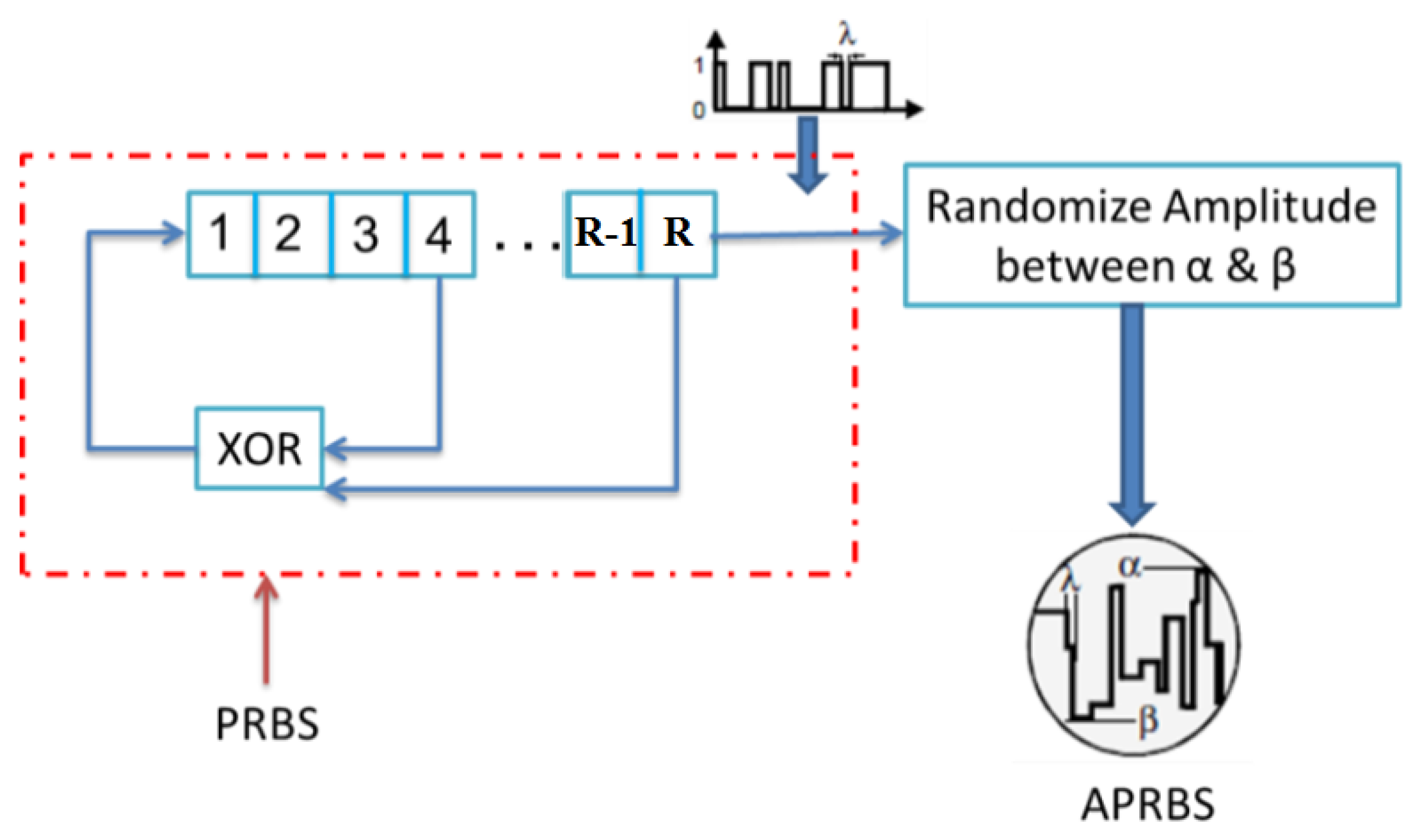
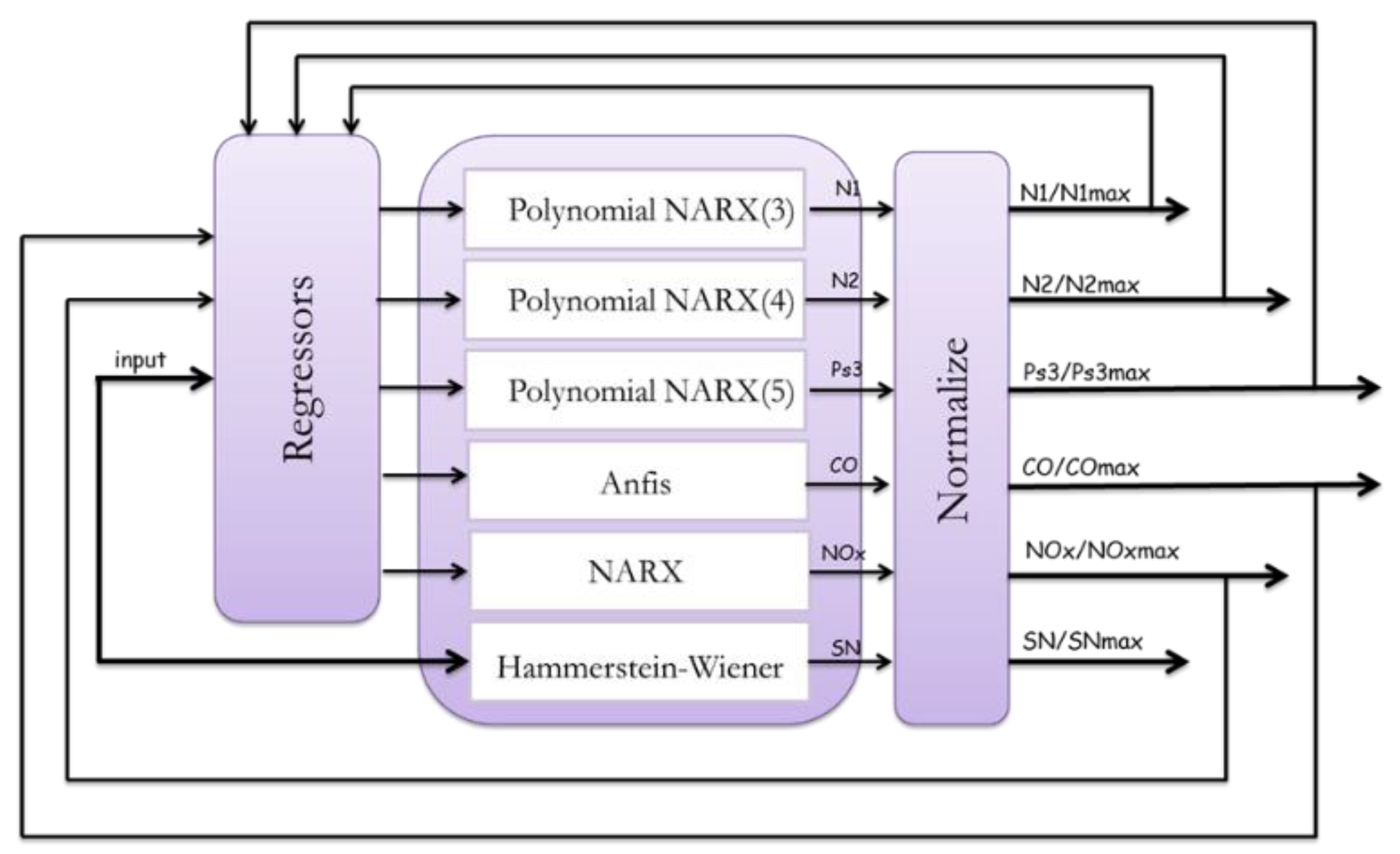

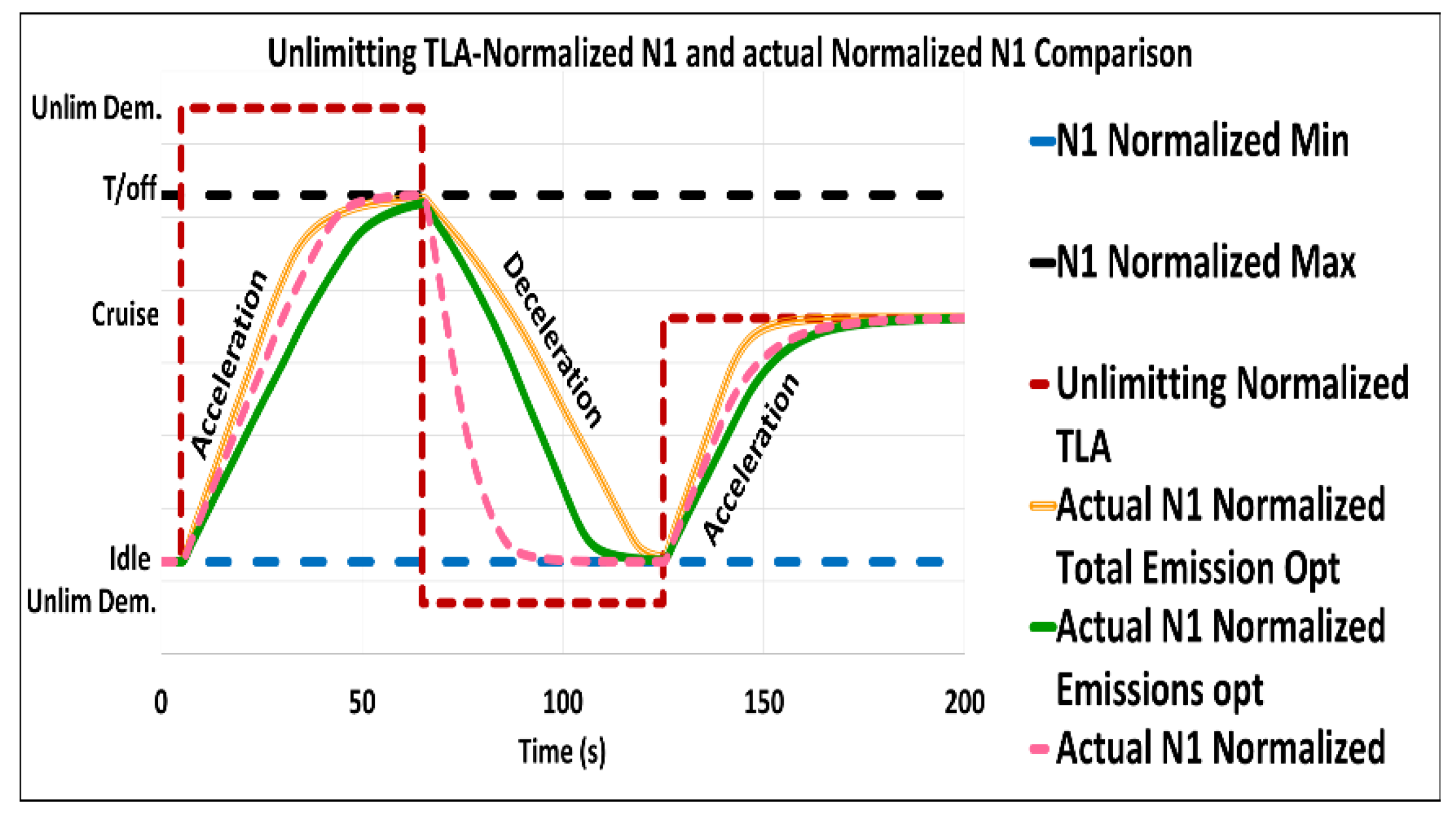
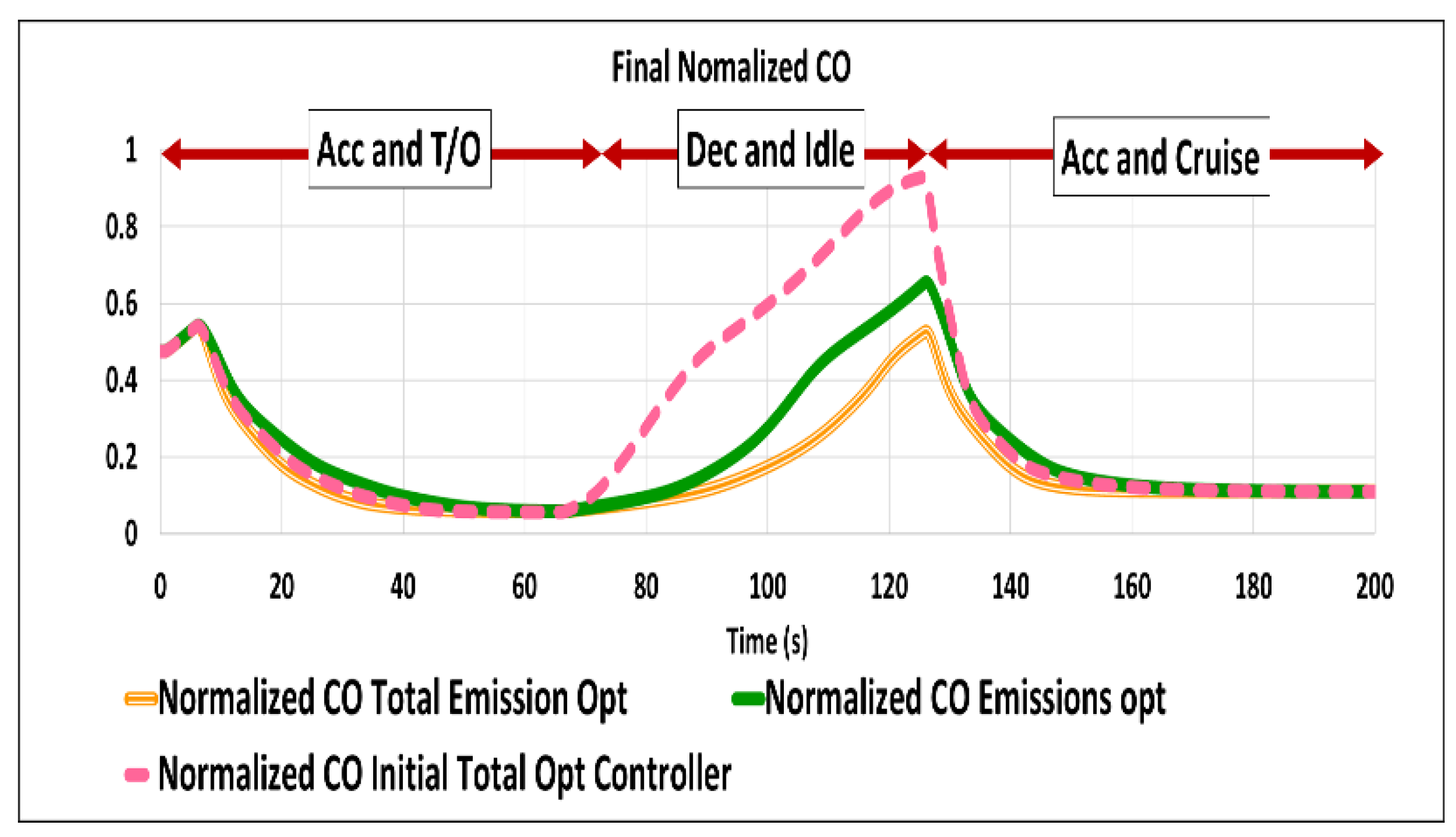

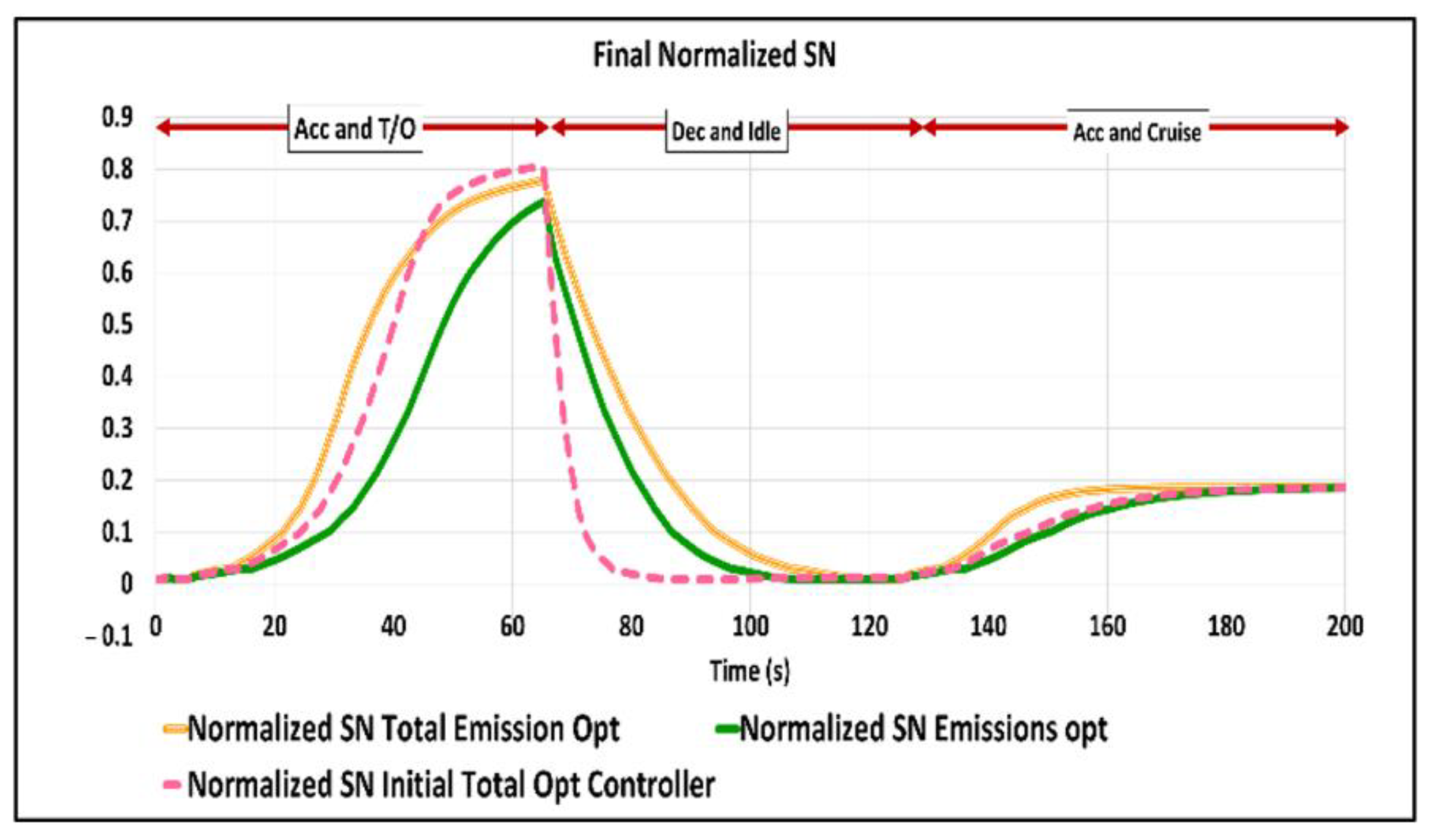

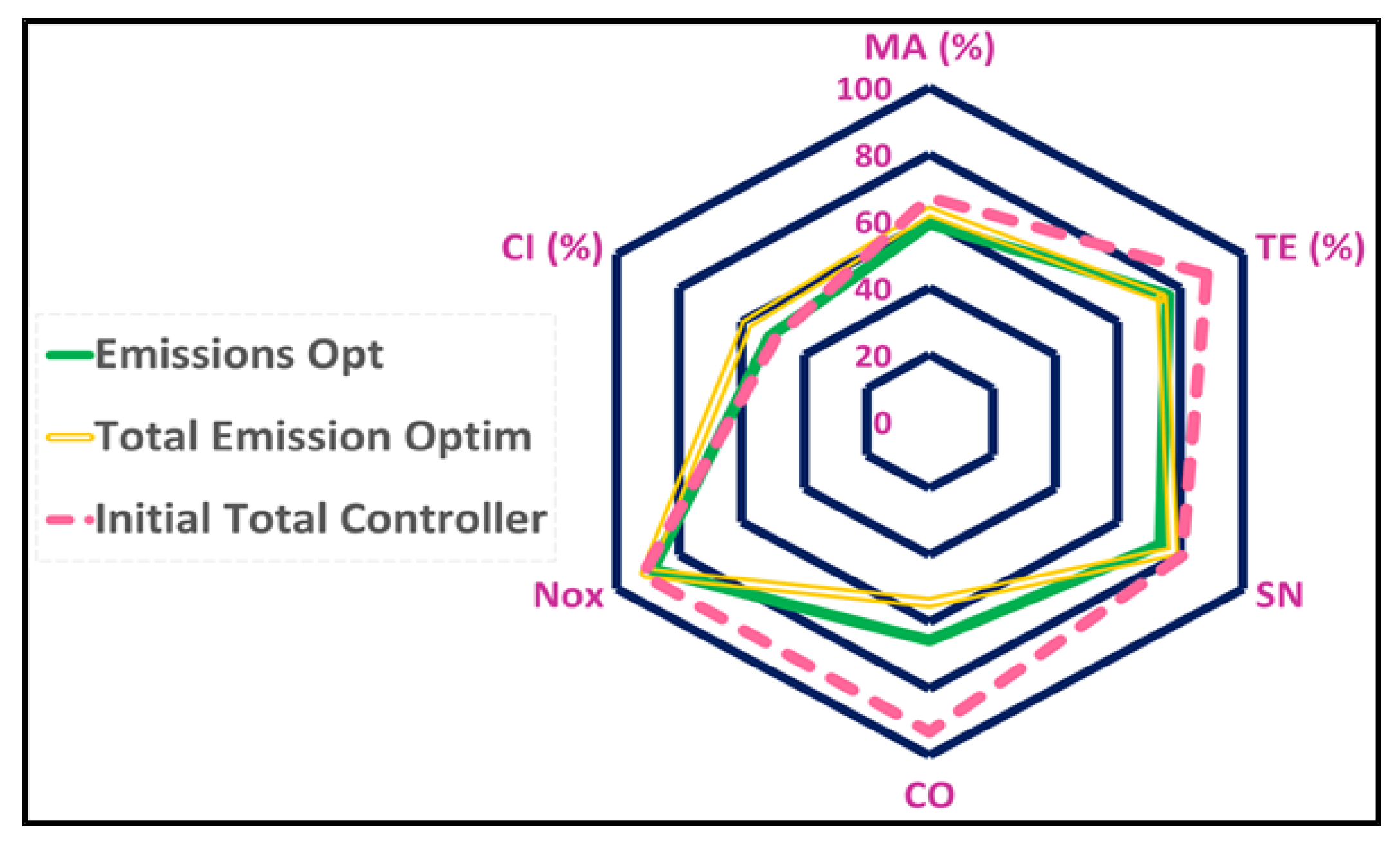
| Parameters | Design Point (CRUISE) Simulation | Design Point (CRUISE) Catalogue Data | Off-Design Point (TAKE-OFF) Simulation | Off-Design Point (TAKE-OFF) Catalogue Data |
|---|---|---|---|---|
| FPR | 1.6 | – | 1.5541 | 1.55 |
| BR | 5.8 | – | 6.00033 | 6 |
| TIT | 1375 | – | 1538.15 | 1538.15 |
| IMFR | 151.5 | – | 368.86 | 386.85 |
| F | 22.268 | 22.268 | 111.400 | 344.111 |
| FMFR | 0.4 | – | 1.05 | – |
| SFC | 0.06121 | 0.0612 | 0.03364 | 0.03364 |
| Model | N1 | N2 | P3 | NOx | CO | SN |
|---|---|---|---|---|---|---|
| ARX (Exhaustive Search) | 0.0564 | 0.073 | 0.022 | 0.032 | 0.067 | 0.103 |
| NARX (GA Optimized) | 0.00014 | 0.000112 | 0.000147 | 0.000153 | 0.0434 | 0.0071 |
| Polynomial NARX (Trial and Error) | 0.00002 | 0.000011 | 0.000062 | – | – | – |
| Hammerstein–Wiener (GA Optimized) | 0.00026 | 0.000691 | 0.000311 | 0.000302 | 0.0147 | 0.000197 |
| Predicted ANFIS (Sequential Forward Search) | 0.00017 | 0.0000129 | 0.000128 | 0.000196 | 0.0005 | 0.000255 |
| Predicted ANFIS (Exhaustive Search) | 0.00003 | 0.00002 | 0.00016 | 0.0002 | 0.0005 | 0.000261 |
| Engine Parameters | Chosen Model | Model Parameters | NRMSE |
|---|---|---|---|
| N1 | NARX | (1, 1, 1) | 0.000142 |
| N2 | NARX | (1, 1, 0) | 0.000112 |
| P3 | NARX | (1, 5, 3) | 0.000147 |
| CO | ANFIS | Regressors: CO(k−1), CO(k−2), Wf(k−5) | 0.0005 |
| NOx | NARX | (2, 5, 1) | 0.000153 |
| SN | Hammerstein–Wiener | (16, 13, 1) | 0.000197 |
| Engine Parameters | Polynomial Power | Model Parameters | NRMSE |
|---|---|---|---|
| N1 | 3 | (1, 1, 0) | 0.00002 |
| N2 | 4 | (1, 1, 0) | 0.000011 |
| P3 | 5 | (1, 1, 0) | 0.000062 |
| Parameters | Value |
|---|---|
| Population Size | 42 |
| Selection Method | Tournament (4) |
| Elite Count | 2 |
| Crossover Method | Scatter |
| Crossover Probability | 0.2 |
| Mutation Probability | 0.03 |
| Stopping Criteria | Generation = 120 |
| Scenario | MA (%Max) | Cl (%Max) | NOx (%Max) | CO (%Max) | SN (%Max) | TE (%Max) |
|---|---|---|---|---|---|---|
| Initial Total Opt. Controller | 66.89 | 49.48 | 91.76 | 93.00 | 80.45 | 88.40 |
| Emissions Opt. | 59.21 | 51.07 | 88.66 | 65.48 | 73.60 | 75.91 |
| Total Emission Opt. | 62.81 | 58.47 | 90.65 | 54.12 | 77.79 | 74.18 |
| Scenario | T/O CO (%Max) | Idle CO (%Max) | Cruise CO (%Max) | T/O NOx (%Max) | Idle NOx (%Max) | Cruise NOx (%Max) | T/O SN (%Max) | Idle SN (%Max) | Cruise SN (%Max) |
|---|---|---|---|---|---|---|---|---|---|
| Initial Total Opt. Controller | 5.61 | 92.72 | 10.98 | 91.76 | 18.19 | 53.14 | 80.43 | 1.21 | 18.55 |
| Emissions Opt. | 5.87 | 64.06 | 10.99 | 88.60 | 18.40 | 53.11 | 73.46 | 1.05 | 18.51 |
| Total Emission Opt. | 5.70 | 51.54 | 10.95 | 90.63 | 18.89 | 53.20 | 77.74 | 0.83 | 18.61 |
Publisher’s Note: MDPI stays neutral with regard to jurisdictional claims in published maps and institutional affiliations. |
© 2022 by the authors. Licensee MDPI, Basel, Switzerland. This article is an open access article distributed under the terms and conditions of the Creative Commons Attribution (CC BY) license (https://creativecommons.org/licenses/by/4.0/).
Share and Cite
Aghasharifian Esfahani, M.; Namazi, M.; Nikolaidis, T.; Jafari, S. Advanced Control Algorithm for FADEC Systems in the Next Generation of Turbofan Engines to Minimize Emission Levels. Mathematics 2022, 10, 1780. https://doi.org/10.3390/math10101780
Aghasharifian Esfahani M, Namazi M, Nikolaidis T, Jafari S. Advanced Control Algorithm for FADEC Systems in the Next Generation of Turbofan Engines to Minimize Emission Levels. Mathematics. 2022; 10(10):1780. https://doi.org/10.3390/math10101780
Chicago/Turabian StyleAghasharifian Esfahani, Majid, Mohammadmehdi Namazi, Theoklis Nikolaidis, and Soheil Jafari. 2022. "Advanced Control Algorithm for FADEC Systems in the Next Generation of Turbofan Engines to Minimize Emission Levels" Mathematics 10, no. 10: 1780. https://doi.org/10.3390/math10101780
APA StyleAghasharifian Esfahani, M., Namazi, M., Nikolaidis, T., & Jafari, S. (2022). Advanced Control Algorithm for FADEC Systems in the Next Generation of Turbofan Engines to Minimize Emission Levels. Mathematics, 10(10), 1780. https://doi.org/10.3390/math10101780







